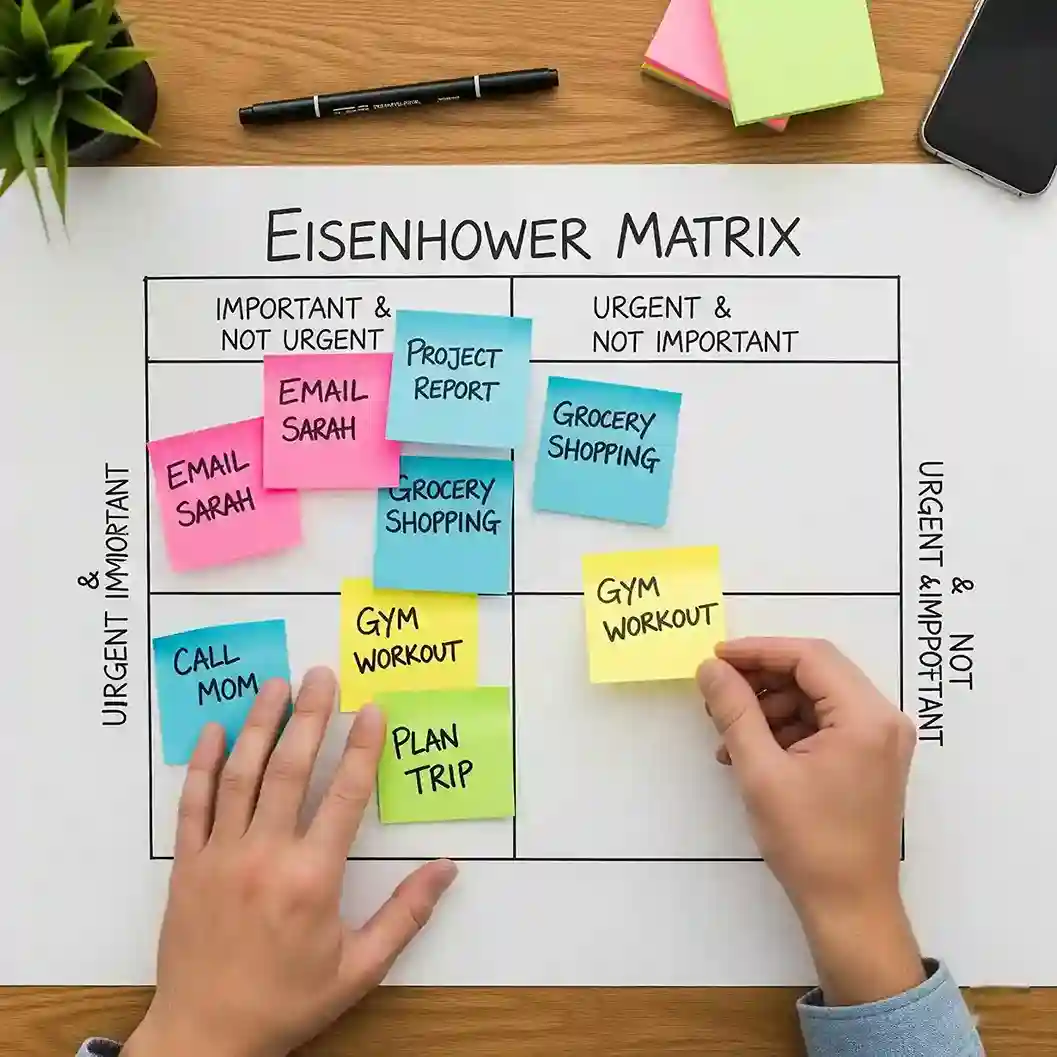The 'Eisenhower Matrix': A Simple Grid to End Procrastination and Master Your To-Do List

The 'Eisenhower Matrix': A Simple Grid to End Procrastination and Master Your To-Do List
Feeling overwhelmed by a never-ending to-do list? Do you often find yourself putting off important tasks until the last minute? The problem isn’t a lack of time—it’s a lack of clarity. Fortunately, there’s a timeless solution from a surprising source: former U.S. President Dwight D. Eisenhower. His simple yet powerful time management tool, the Eisenhower Matrix, can help you prioritize tasks, reduce stress, and conquer procrastination.
How to Use the Four-Quadrant System
The Eisenhower Matrix is a simple grid that helps you sort your tasks based on two factors: Urgency and Importance. By asking yourself these two questions for every task, you can categorize it into one of four quadrants and decide on the best course of action.
1. Urgent & Important: (Do) These are your crises, impending deadlines, and pressing problems. They require immediate attention. Example: A project deadline tomorrow, a medical emergency.
2. Important & Not Urgent: (Schedule) This is the most crucial quadrant. These tasks are key to your long-term goals and personal growth. They should be scheduled and planned. Example: Planning for a new project, learning a new skill, regular exercise.
3. Urgent & Not Important: (Delegate) These are interruptions and minor requests that often feel urgent but don't contribute to your major goals. It’s best to delegate these if possible. Example: Responding to non-critical emails, attending a last-minute meeting that isn't essential to your work.
4. Not Urgent & Not Important: (Eliminate) These are the time-wasters. They neither help you achieve your goals nor are they urgent. You should avoid these entirely. Example: Mindless social media scrolling, binge-watching TV.
By using this simple grid, you can gain a clear perspective on your workload. It shifts your focus from being busy to being truly productive, helping you make better decisions about how you spend your most valuable resource: your time.


